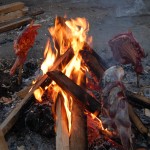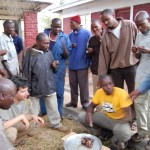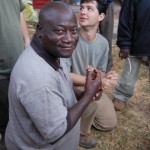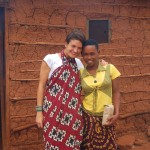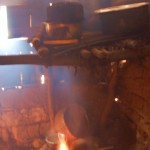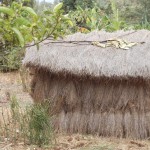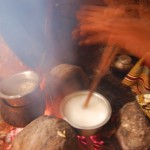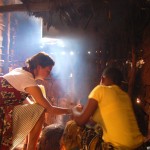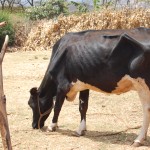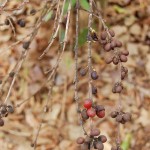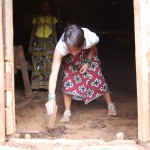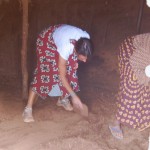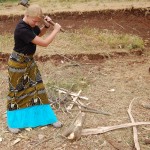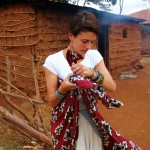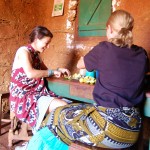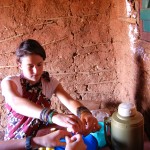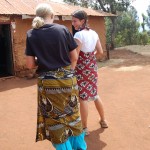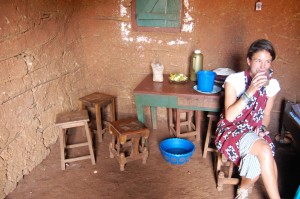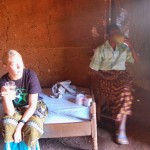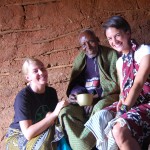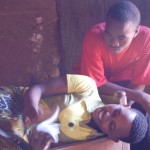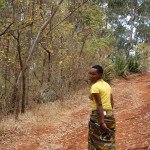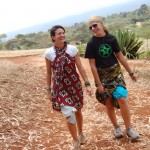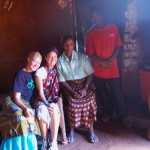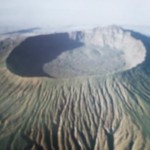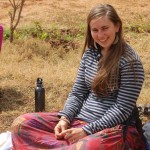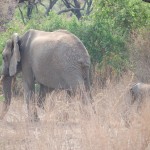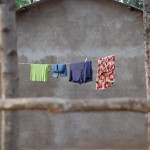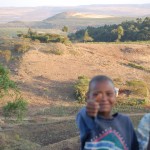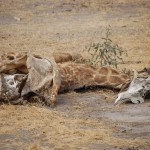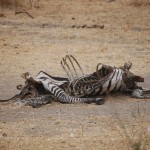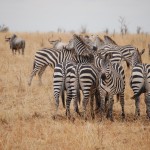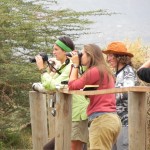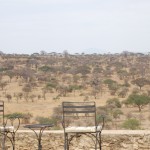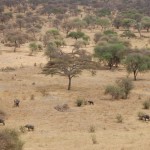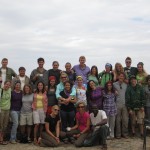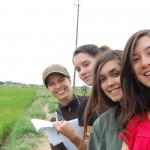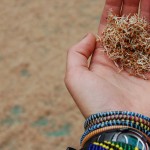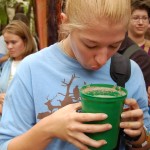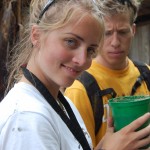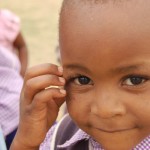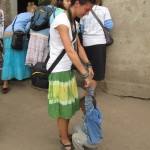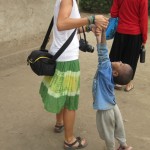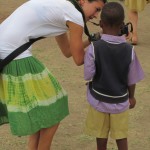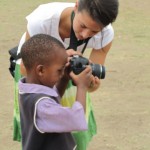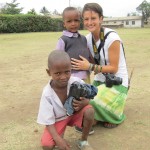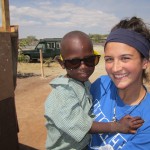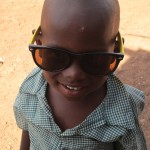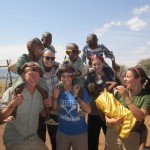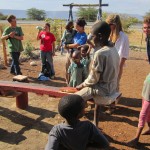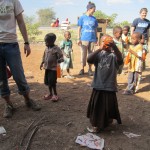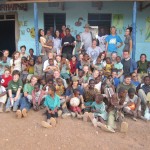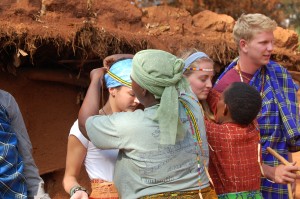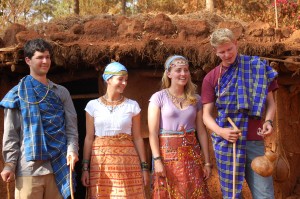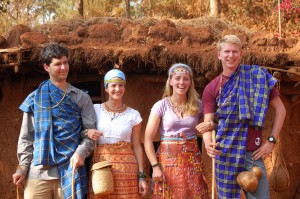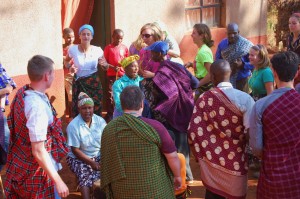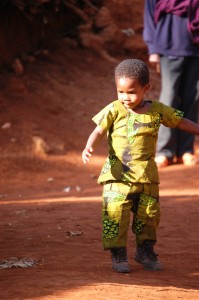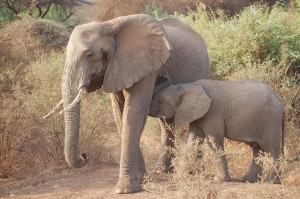So today is a preparation day for our expedition. We will be taking a camp survival skills/risk management course after helping the staff pack food, water, and essential toiletries for all 28 of us. We have to bleach and clean 30 huge canteens of water, pack an obscene amount of food, and bring as much biodegradable soap, toilet paper, and sunscreen as possible. On our way to the Serengeti, we are stopping at the Olduvai Gorge archeological site (Anthro majors I am sure you know what I’m talking about). This site marks the hub of civilization and is commonly referred to as the “Cradle of Mankind.” It shows the evolution of the homo sapien species (almost every species leading up to us…such as homo erectus, australopithecus, and hilibis have a history of living here). Louis Leakey, developer of the “Out of Africa” theory (all mankind developed in Africa and then spread out), created this hypothesis here. Other australopithecines (e.g. Lucy, who was found in Ethiopia I believe) have been excavated here.
The market yesterday was so hectic. There were thousands among thousands of people 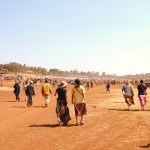 but I found two beautiful skirts
but I found two beautiful skirts 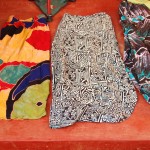 (two on the left) for $3,500 shillings…which is around $2.50 USD…we really dug deep (
(two on the left) for $3,500 shillings…which is around $2.50 USD…we really dug deep (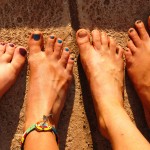 , literally) to get good, non-mzungu prices. I got a seamstress (our neighbor) to make my fabric into huge baggy/comfy pants (on the right), my favorite! …and even in Africa I could not stifle my love for flannels (yes I bought a flannel in Africa…what was I thinking, I know). They also sold livestock at the market. Cows were going for $50.00. You really did have to watch your back while shopping because they were getting into fights right and left
, literally) to get good, non-mzungu prices. I got a seamstress (our neighbor) to make my fabric into huge baggy/comfy pants (on the right), my favorite! …and even in Africa I could not stifle my love for flannels (yes I bought a flannel in Africa…what was I thinking, I know). They also sold livestock at the market. Cows were going for $50.00. You really did have to watch your back while shopping because they were getting into fights right and left 
Not to bring up political issues again…but sorry I need to. So, Serengeti originates from a Maasai word meaning “the place where the land moves on forever.” However, a planned highway slicing through the park could cause endless problems for the park’s migratory wildlife. As you may or may not know, every year huge herds of wildebeests and zebra migrate through the Serengeti. The 260-mile highway, that is projected to cut through 31 miles of the park, would cause a collapse of one of the largest remaining migratory systems on Earth…in effect abolishing Tanzania’s tourism trade driven by wildlife. Although the stats are mind-boggling, they really do put the severity of this dilemma into perspective. So 1.3 million wildebeests and about 200,000 zebras follow the rains every year, migrating south in the fall and NW for the spring/summer rains. They estimate that the wildebeest population would plummet to 300,000. Another scary thought is that this infrastructure would provide easy access, to the dense center of the national park, for poachers…and if poaching becomes a problem, then fences will be put up…blocking the migratory patterns to and from Kenya’s Maasai-Mara national park completely. Construction is set to begin on 2012. Tanzanian’s current government, CCM (Kikwete, as you know since you’re all now politically educated!) has vowed to move forward with the assembly because they think it is a necessary step in connecting TZ’s west with commercial activity on the east coast. What frustrates me, along with many other conservationists, is that they haven’t considered building the road south of the park (not disturbing any migratory corridors). Yes this highway would be longer (and consequently more expensive) but it would forever preserve the income from the area’s 90,000 annual tourists…which would end up paying off the difference. Here are some pics of the crazy wildlife I hope to see at Serengeti (totally wish I could say I was the photographer to praise for these shots) 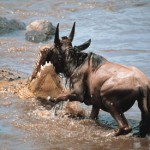
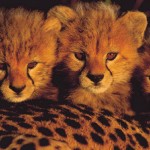
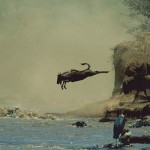
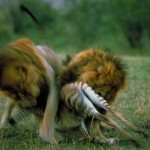
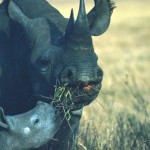
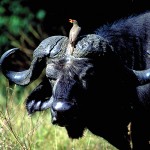
I actually got invited to go to a neighbor’s wedding this afternoon! I’m not sure if it’s appropriate to take pictures at the wedding but I’m going to try…after searching for the wedding cake, TGIF!
☮Hannah

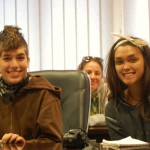
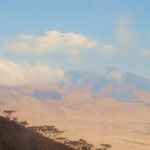
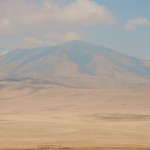
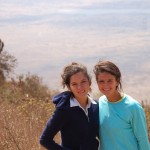

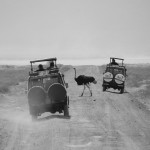
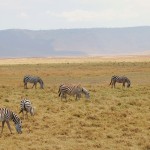

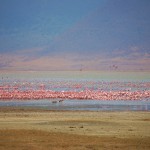
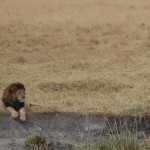
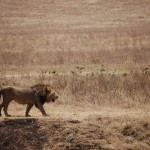
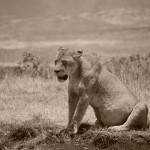
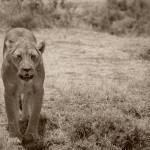
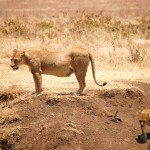
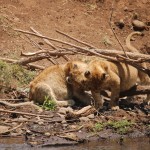
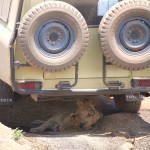
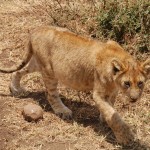
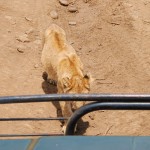
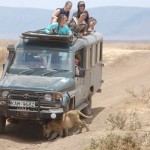
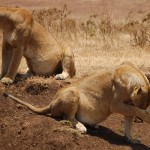

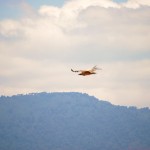
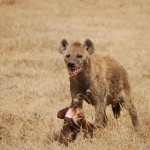
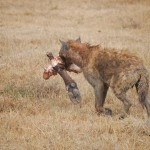
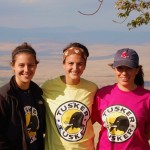
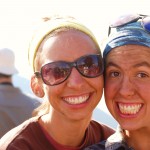
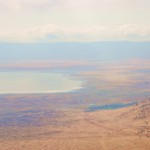
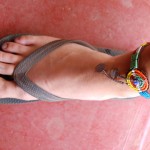
 . Not surprisingly, I had to buy an imitation Baobab tree to hang them on
. Not surprisingly, I had to buy an imitation Baobab tree to hang them on 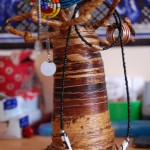 . I even found a Tanzania jersey!
. I even found a Tanzania jersey! 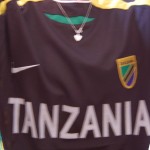
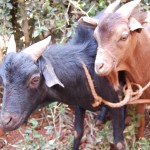

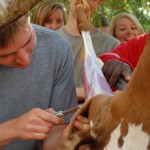 . Our Wildlife Ecology teacher then asked if we could put, essentially the digestive tract
. Our Wildlife Ecology teacher then asked if we could put, essentially the digestive tract 
